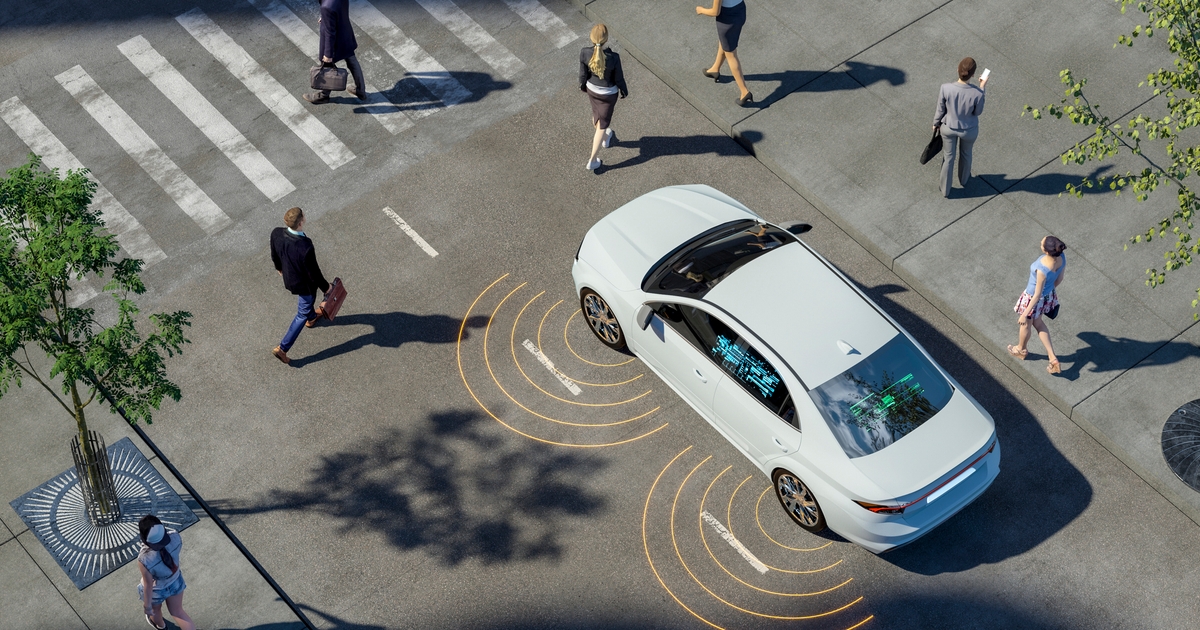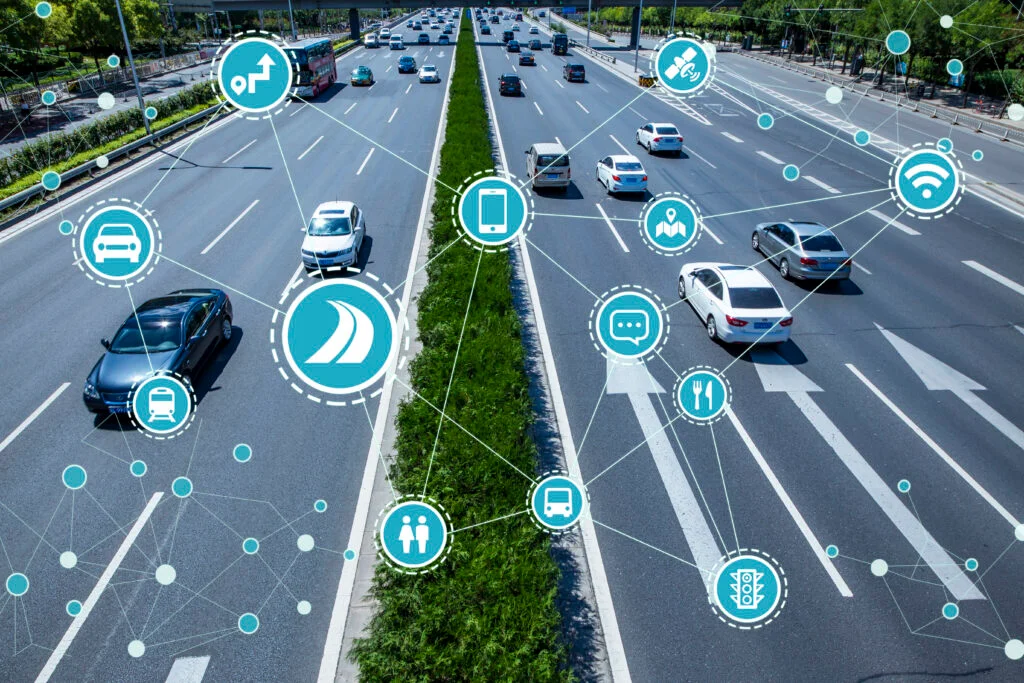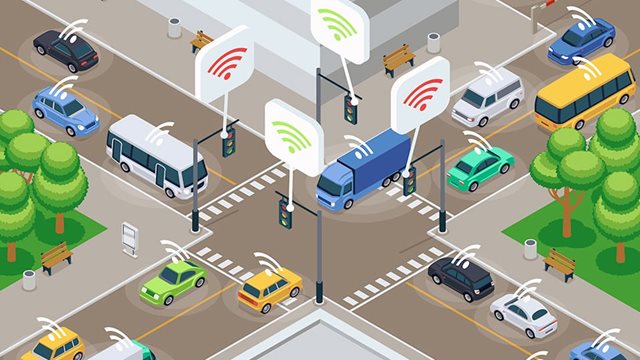The Future of Speed Enforcement: How Digital, Dynamic, and Automated Technologies Are Transforming Road Safety
Jul 3, 2025 Resolute Dynamics
For decades, speed enforcement has been reactive—stationary traps, late-arriving tickets, and lots of missed violations. But cities and fleet operators are now switching gears.
With connected sensors and AI, enforcement is shifting from punishment to prevention. We’re not just catching drivers—we’re coaching them in real time. Here’s how this shift is reshaping the safety of our roads.
✅ Key Takeaway
Speed enforcement is shifting from reactive to intelligent. With digital sensors, AI-driven analysis, and automated alerts, cities and fleets can now detect, adapt, and respond to risky driving in real time.
This new approach not only improves compliance but actively prevents accidents before they happen. It’s not just faster enforcement—it’s smarter, safer, and built for how we actually drive today.
What Does ‘Digital, Dynamic, and Automated’ Really Mean?
Let’s peel back the jargon. “Digital,” “dynamic,” and “automated” might sound like marketing lingo, but under the hood, these terms define how modern speed enforcement actually works.
Digital: Everything’s Connected, and Talking in Real Time
“Digital” enforcement starts with the shift from isolated, analog tools (like handheld radar guns) to an ecosystem of smart, networked devices. These include:
- High-resolution ANPR (Automatic Number Plate Recognition) cameras
- Lidar and radar sensors that measure vehicle speed with pinpoint accuracy
- GPS data feeds integrated with connected vehicle platforms
- Cloud-based processing that stores, analyzes, and sends alerts in real time
Each of these systems shares data across a digital backbone—often a centralized platform or traffic management system. Think of it like a brain that can see every vehicle, understand what it’s doing, and respond instantly.
Dynamic: Speed Rules That Change with the Road
“Dynamic” enforcement isn’t static. It adapts.
Speed limits don’t have to be fixed anymore. With adaptive speed control, cities and highways can change posted speeds in real time based on:
- Weather conditions (e.g., rain, fog, or icy roads)
- Traffic flow (rush hour vs. late night)
- School hours or construction zones
- Special events that increase pedestrian activity
For instance, a school zone speed limit might drop automatically between 7 a.m. and 9 a.m., then return to normal. A busy freeway might reduce the speed limit temporarily to prevent pile-ups in heavy fog. Drivers receive this feedback via digital signage or, in fleets, directly in their in-cab systems.
Automated: Let the System Do the Heavy Lifting
This is where the magic happens. “Automated” enforcement removes the need for manual review, paperwork, or even human presence.
How?
- AI identifies a speeding vehicle using camera data
- The vehicle’s license plate is captured, verified, and logged
- A violation is recorded and sent to a central enforcement server
- Alerts are generated instantly—sometimes even before the driver finishes the trip
Automation drastically reduces the lag between violation and consequence. Some systems even warn the driver before the violation occurs, creating a feedback loop that improves behavior without needing to issue a fine.
In fleets, drivers receive real-time feedback: a speed alert, a voice notification, or a dashboard warning that nudges them to slow down. These systems log behavior for review but don’t necessarily punish—it’s about modifying risky behavior early, not just catching it.
Where It’s Already Happening
It’s not science fiction. Smart cities are rolling this out as we speak.
Picture a freeway in the UAE. Road conditions change with the heat. A truck carrying cargo drifts into the fast lane. Within seconds, onboard systems flag the behavior. Cameras detect speed variance. A real-time alert goes out to control centers, and the driver gets a warning in-cabin before they even know they slipped up.
Companies like Resolute Dynamics are deploying these setups across India, Southeast Asia, and the MENA region. They’ve connected over 200,000 vehicles, many operating in high-risk, high-speed corridors.
Fleet operators, especially, are leaning hard into this. It’s not just about catching speeders—it’s about preventing dangerous habits from forming in the first place.
Benefits of Next-Gen Speed Enforcement
Automated enforcement systems operate consistently and without bias—day or night, rain or shine
Key benefits include:
- Real-time incident detection and driver alerts
- Lower insurance costs from fewer claims
- Streamlined operations with less manual reporting
Just as important, these systems offer feedback in the moment—not weeks later through a citation. That instant feedback loop helps drivers self-correct, making roads safer without piling on penalties.
The Role of AI and Machine Learning in Predictive Safety

Let’s talk about the brains behind the operation.
Artificial Intelligence (AI) in speed enforcement isn’t just number-crunching software—it’s a system that watches, learns, and evolves. It turns roads into feedback loops and vehicles into data sources, spotting danger long before it becomes a headline.
Predictive Modeling: Seeing Trouble Before It Happens
AI doesn’t wait for a crash to learn what went wrong. It builds behavioral patterns from millions of data points—speed fluctuations, sudden braking, sharp cornering, GPS location, time of day, weather conditions, and even the type of road.
Let’s say a fleet van consistently speeds near school zones on Thursdays. Or a delivery truck regularly brakes hard in wet weather. These aren’t random events—they’re patterns. AI flags them and learns from them—this kind of predictive analytics in telematics is already helping fleets future-proof their safety strategies.
This is predictive modeling. Instead of reacting to violations, systems can now forecast risky driver behavior before it causes harm. Fleet managers get early warnings, drivers receive targeted coaching, and cities see fewer accidents in hotspots.
Computer Vision: More Than Just Speed
Modern AI doesn’t stop at how fast you’re going. Computer vision, powered by edge cameras and neural networks, makes sense of what it sees on the road—just like a human would, only faster and without blinking.
Here’s what it can detect:
- Distracted driving (looking down at a phone)
- Seat belt violations
- Drowsiness (based on eye movement and head tilt)
- Lane drifting and unsafe following distances
- Improper signaling or weaving in and out of traffic
Each infraction gets logged and attached to a driver scoring algorithm. The more unsafe actions, the lower the score. That score feeds into performance reports, training programs, or even automatic interventions (like in-cab alerts or access restrictions).
Edge AI and Real-Time Inference: Zero Lag, Full Context
Speed enforcement needs to happen right now—not after uploading gigabytes to the cloud.
That’s where Edge AI comes in. Instead of sending raw footage or telemetry to a data center, the system runs the model on-device—right inside the camera or the vehicle’s onboard computer.
This is called real-time inference. The AI:
- Spots violations instantly
- Flags anomalies
- Sends alerts without relying on a central server
The result? Faster reactions, lower bandwidth use, and higher reliability—especially in places with poor connectivity.
Fleet Telematics: The Backbone of Context-Aware Enforcement
AI works best when it knows the full picture. That’s where fleet telematics feeds in rich context—vehicle type, driver ID, load weight, fuel levels, weather data, even tire pressure.
It’s not just “a car went fast.” It’s:
- “A 12-ton truck driven by Joe was speeding in wet conditions while carrying sensitive cargo and failing to signal.”
That level of detail allows enforcement systems to grade risks differently. A family sedan doing 80 km/h on a dry highway? Maybe fine. A tanker truck doing the same near a school? Big red flag.
Technical Architecture of Smart Enforcement Systems

You can’t enforce traffic safety intelligently without intelligent infrastructure. Underneath the cameras and warnings is a full-stack system—built to watch, process, decide, and act in milliseconds.
Curious how your existing infrastructure can integrate with smart enforcement?
Speak with our experts to assess compatibility and design a rollout strategy.
Let’s break it down from ground level to the cloud.
1. The Sensor Layer: Capturing the Raw Data
This is where it all begins. Sensors gather the environmental inputs that fuel the rest of the enforcement chain. These include:
- Radar and lidar units that track vehicle speed, distance, and movement in real time
- High-definition cameras with night vision and motion tracking
- Environmental sensors to detect weather, visibility, and road surface conditions
- License plate recognition modules (ANPR) to log vehicle identity
Many setups now use event-based video, capturing only when a trigger condition occurs—like crossing a speed threshold or failing to stop at an intersection. This saves bandwidth and narrows the data set for analysis.
2. The Edge Processing Layer: Real-Time, On-Site Intelligence
Instead of sending every frame and data point to a central server, smart enforcement systems push decision-making closer to the source.
Edge devices—like roadside processors or onboard vehicle units—run inference models locally. That means:
- They analyze behavior instantly
- Apply AI models to classify risk (e.g., was that a reckless lane change?)
- Decide if the data warrants escalation
This reduces latency, keeps sensitive data local when possible, and ensures performance even when connectivity drops.
3. The Data Pipeline: Moving Clean, Structured Data
Raw sensor data is messy. The data pipeline acts as the filtration and formatting layer:
- Data normalization turns various formats (e.g., video, GPS, timestamps) into a standardized structure
- Compression and encryption secure the data for transit
- Batch and stream processing allow real-time alerts alongside longer-term analytics
In fleet systems, this layer also integrates vehicle data gateways, pulling from CAN bus data (engine, brakes, steering) to add deeper context to each violation.
4. The Cloud Layer: Storage, Analytics, and Compliance
The cloud backend is the digital control tower.
Here’s where the data lands for:
- Violation logging and ticket generation
- Behavioral trend analysis across roads, drivers, or entire fleets
- Cross-agency access (e.g., law enforcement, traffic ops, fleet safety teams)
- Compliance tracking: calibration logs, audit trails, and retention policies
Scalability is key. Systems must be able to handle surges in data—from rainstorms, rush hours, or special events—without performance loss.
5. The AI Decision Layer: Making the Call
Once the data is clean and contextualized, AI kicks in to:
- Score driver behavior
- Classify the severity of an infraction
- Predict high-risk zones
- Trigger interventions (warnings, fines, or traffic rerouting)
Modern platforms use self-learning models, meaning their accuracy improves over time. Violations aren’t just flagged—they’re understood in context: who the driver is, what vehicle they were operating, where they were, and what conditions surrounded the action.
6. Integration and Update Layer: Keeping It Fresh
Last but not least: the system must evolve. Here’s how:
- Over-the-air (OTA) updates push improvements to AI models, firmware, and user interfaces
- APIs allow enforcement data to be shared with third-party platforms (e.g., law enforcement databases, fleet dashboards, municipal planning tools)
- Systems integrate with Intelligent Transport Systems (ITS) to influence broader traffic flow, not just punishment
Bringing It All Together
A modern smart enforcement system isn’t just a camera on a pole. It’s a stack of layered intelligence, moving from raw sensing to automated judgment in under a second. Each layer—sensor, edge, pipeline, cloud, AI—must work in harmony. And all of it must stay secure, compliant, and scalable.
Challenges and Ethical Considerations

Let’s not sugarcoat it—smart speed enforcement sounds great on paper, but deploying it in the real world? That’s where the potholes show up.
This isn’t just a question of tech readiness. It’s about laws, budgets, and public perception. And if you overlook any of these, you’re headed for gridlock.
1. Privacy and Data Sovereignty: Who Owns the Data?
Surveillance raises red flags—especially when vehicles are tracked down to the meter, 24/7. The system might be watching for speeders, but the public sees something else: constant monitoring.
The legal backdrop here is messy.
- In Europe, GDPR mandates that any system collecting personal data (like license plate numbers, driver faces, or route history) must meet strict consent and security rules.
- India’s data localization law requires companies to store and process sensitive data within national borders.
- In the U.S., there’s a patchwork of state laws, some allowing automated ticketing, others banning it outright.
If a fleet crosses multiple jurisdictions, or if a city adopts AI enforcement without transparency, legal exposure multiplies. That’s why vendors now design systems with privacy-by-default architectures—think encryption, redacted video feeds, and user-controlled data retention windows.
2. Public Backlash: No One Likes Being Watched
Even if a system follows the law, public sentiment matters.
Drivers don’t want to feel like they’re in a sci-fi dystopia. There’s a fine line between safety and surveillance. If people think the system is designed to generate revenue—not reduce risk—they push back hard.
Some cities have learned this the hard way. In Chicago, red light cameras caused a storm when drivers realized how easy it was to get fined without recourse. Similar programs in Australia and Germany faced protests until they added independent oversight and appeal mechanisms.
Transparency is non-negotiable. Cities need to explain:
- What data is collected
- How it’s stored
- Who has access
- How violations are reviewed
And most importantly: How do people challenge it when it’s wrong?
3. Cost: It’s Not Just Buying Cameras
AI enforcement isn’t cheap. While the ROI is strong long-term, the initial capital outlay can make CFOs twitch.
Here’s a rough breakdown:
- Hardware: Cameras, edge processors, roadside units, vehicle-mounted sensors
- Software: Vision AI models, violation detection algorithms, backend analytics platforms
- Integration: Custom APIs for local law enforcement systems, fleet dashboards, mobile alerts
- Cloud Infrastructure: Data storage, redundancy systems, compliance controls
- Maintenance: Firmware updates, model retraining, hardware servicing
And don’t forget training. Officers, fleet operators, and drivers all need to learn how the system works—and what to do when it doesn’t.
Smaller municipalities or cash-strapped fleets may find this prohibitive without government grants or phased rollout options.
4. Legal Constraints on Automated Ticketing
AI can detect a violation in milliseconds. But whether that evidence is legally admissible? That’s a whole different beast.
Some jurisdictions require:
- A human to review every violation before issuing a fine
- Physical signage notifying drivers of camera surveillance
- Strict calibration logs to validate sensor accuracy
Without compliance, tickets can get tossed out in court—or worse, spark lawsuits.
This makes compliance auditing and chain-of-custody documentation essential. Enforcement tech needs not just performance—but legal defensibility.
Final Word: Smart Doesn’t Mean Simple
Rolling out digital, dynamic, and automated speed enforcement isn’t like flipping a switch. It’s a process of legal alignment, technical readiness, and social acceptance. Skip one, and the whole system grinds to a halt.
To succeed, agencies and operators need to move slow before they move fast: align with local laws, educate the public, and plan for full-spectrum costs.
Otherwise, the smartest system in the world might sit unused—boxed up in a warehouse, waiting for the green light that never comes.
Global Trends and Adoption
AI-driven speed enforcement isn’t isolated to one region—it’s becoming a global standard.
- UAE has integrated smart traffic systems into its Vision 2030 framework, using AI cameras and predictive analytics in major cities like Dubai and Abu Dhabi.
- Singapore combines adaptive speed zones with real-time surveillance, powered by their Smart Nation initiative.
- India leverages its FASTag system for toll-speed compliance, integrating it with AI-based violation detection on national highways.
- The European Union mandates Intelligent Speed Assistance (ISA) in all new vehicles from 2024, pushing automated compliance into the private car market.
Governments are aligning around a shared goal: proactive, data-driven enforcement that scales. While tech sophistication varies, the direction is clear—automation is becoming policy, not just a tool.
Where Speed Enforcement Is Going Next
We’re not stopping at cameras and sensors. Think:
- V2X Communication: Vehicles talking to each other and to infrastructure in real-time.
- Predictive Control Zones: High-risk zones created dynamically based on historical crash data.
- 5G-backed Enforcement: Split-second responsiveness, even in dense city grids.
And maybe someday, human enforcement will just be a backup. AI will handle the rules of the road better than we ever could.
How Resolute Dynamics Fits Into All This
You want results? Look at firms like Resolute Dynamics.
They don’t just supply hardware. They integrate systems that make cars smarter and fleets safer. Their edge comes from combining connected vehicle platforms with high-accuracy sensors and AI decision engines. We’re talking proactive safety—not just reaction after a violation.
When 200,000+ vehicles across 20+ countries run your tech, you’re not a vendor—you’re a backbone.
Conclusion
Speed enforcement used to be about catching the bad apples. Now it’s about making the whole orchard smarter.
As digital enforcement becomes the norm, we’re moving toward roads that adapt to behavior, anticipate danger, and act fast. It’s no longer just about writing tickets—it’s about writing a new rulebook for safety.